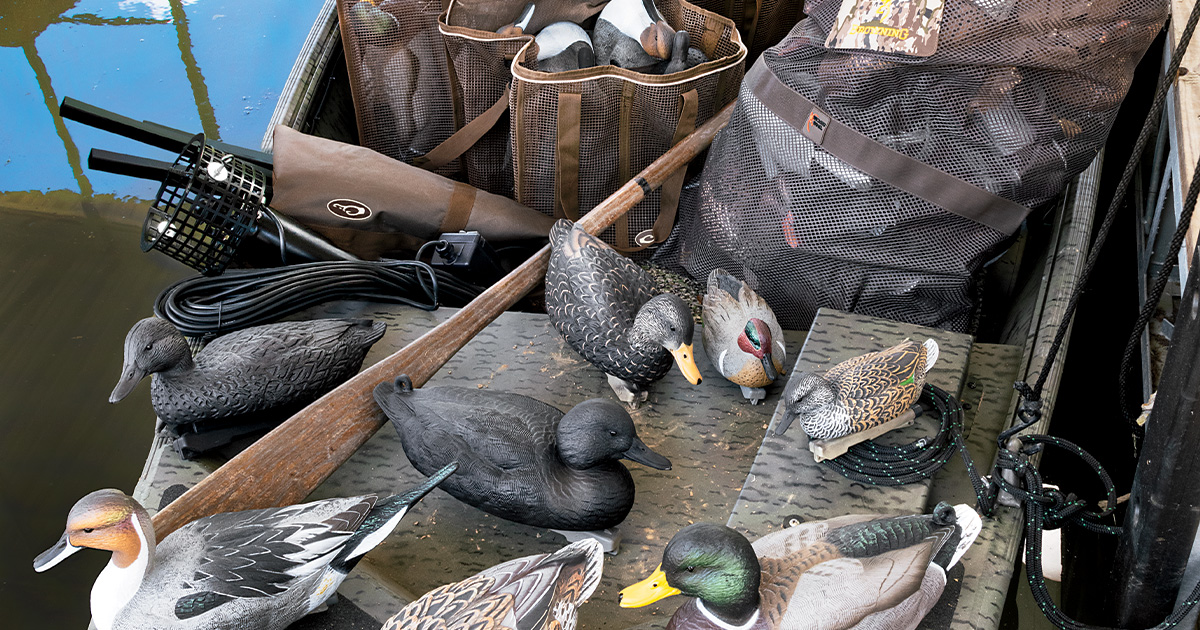Expert Tips on Storing and Transporting Dive Bomb Decoys

Proper storage and transportation of decoys are essential to ensure their longevity and maintain performance. www.divebombindustries.com produces high-quality decoys designed for durability, but even the best gear requires careful handling. With the right techniques, hunters can protect their investment, simplify travel, and enjoy optimal results season after season.
Storing decoys correctly prevents damage from moisture, sunlight, and physical stress. Dive Bomb decoys are made from durable materials, but prolonged exposure to water or direct sunlight can degrade color and flexibility. Keeping decoys in a dry, cool, and shaded area prolongs their life and keeps them looking lifelike.
Using dedicated storage containers is highly recommended. Dive Bomb offers storage solutions that accommodate various decoy sizes and shapes. These containers prevent deformation, scratches, and accidental breaks during off-season storage, making it easier to organize and access decoys when needed.
Regular maintenance also plays a key role. Before storing, rinse decoys with fresh water to remove dirt, mud, or debris, and allow them to dry completely. Inspecting for cracks or loose parts ensures that decoys are ready for use when the hunting season begins, avoiding last-minute surprises.
Efficient Transportation Strategies
Transporting decoys safely is just as important as storage. Hunters often carry multiple decoys across rough terrain, wetlands, and vehicles. Dive Bomb decoys are lightweight yet sturdy, allowing for convenient handling without sacrificing durability.
Proper packing prevents damage during transport. Use padded bags or boxes, ensuring decoys are secure and separated to avoid collisions. Dive Bomb gear fits comfortably in standard decoy bags, making it simple to organize by type, size, or hunting location.
Consider the type of vehicle used for transport. Flatbeds, pickup trucks, and SUVs offer ample space for decoys, but securing them is critical. Tie-downs, nets, or straps help prevent movement and keep decoys safe during transit. Dive Bomb decoys respond well to careful packing, ensuring they arrive intact.
Transporting motion decoys requires extra attention. Components like stakes, motors, or moving parts must be stored in protective sleeves or compartments to prevent bending or mechanical failure. Dive Bomb’s design makes these decoys easy to disassemble and pack, simplifying transportation without compromising functionality.
Organizing Decoys for Quick Setup
A well-organized transport system speeds up setup time at hunting sites. Arrange decoys by type and size so they are easily accessible when deploying spreads. Dive Bomb decoys can be grouped into categories such as full-body, motion, and shell decoys for efficient unpacking.
Labeling bags or containers reduces confusion, especially when hunting with multiple participants. Dive Bomb decoy bags can be marked for quick identification, ensuring that each hunter knows exactly where to find specific pieces. This organization is essential for maximizing time in the field.
Pre-assembling some decoys or attaching motion parts before transport can save significant setup time. Dive Bomb motion decoys are designed for easy assembly and disassembly, allowing hunters to streamline deployment without risking damage.
Keeping essential tools and accessories together is also important. Stakes, ropes, and spare parts should be stored in a dedicated kit within your transport system. Dive Bomb gear is compatible with compact accessory storage, keeping everything in one place and ready for immediate use.
Seasonal Care and Long-Term Storage
After the hunting season, proper care ensures decoys remain in top condition for years. Clean all decoys thoroughly, checking for debris, mud, and water residues. Dive Bomb decoys are easy to clean and maintain, making post-season preparation simple and effective.
Dry decoys completely before storing to prevent mold, mildew, or warping. Store them in breathable containers or racks that allow air circulation. Avoid stacking heavy decoys on top of others to prevent deformation, especially for motion models with moving parts.
Inspect for damage and perform necessary repairs before storage. Replace worn stakes, tighten loose screws, and lubricate moving components to ensure decoys function properly next season. Dive Bomb decoys are built for longevity, and routine maintenance preserves their performance.
Labeling and documenting decoy inventory can also save time in future seasons. Keeping a checklist of decoy types, quantities, and condition allows hunters to identify missing or damaged pieces early. Dive Bomb gear’s durable construction and thoughtful design make this process straightforward and stress-free.
Conclusion
Proper storage and transportation are vital for maintaining the performance and lifespan of your Dive Bomb decoys. Using dedicated containers, padded transport solutions, organized setups, and seasonal maintenance ensures that every decoy remains effective and ready for use.
Whether you are a beginner or a seasoned waterfowl hunter, following these expert tips maximizes the value of your investment in Dive Bomb decoys. Their durable, versatile, and user-friendly design makes storage, transport, and setup easier than ever.
